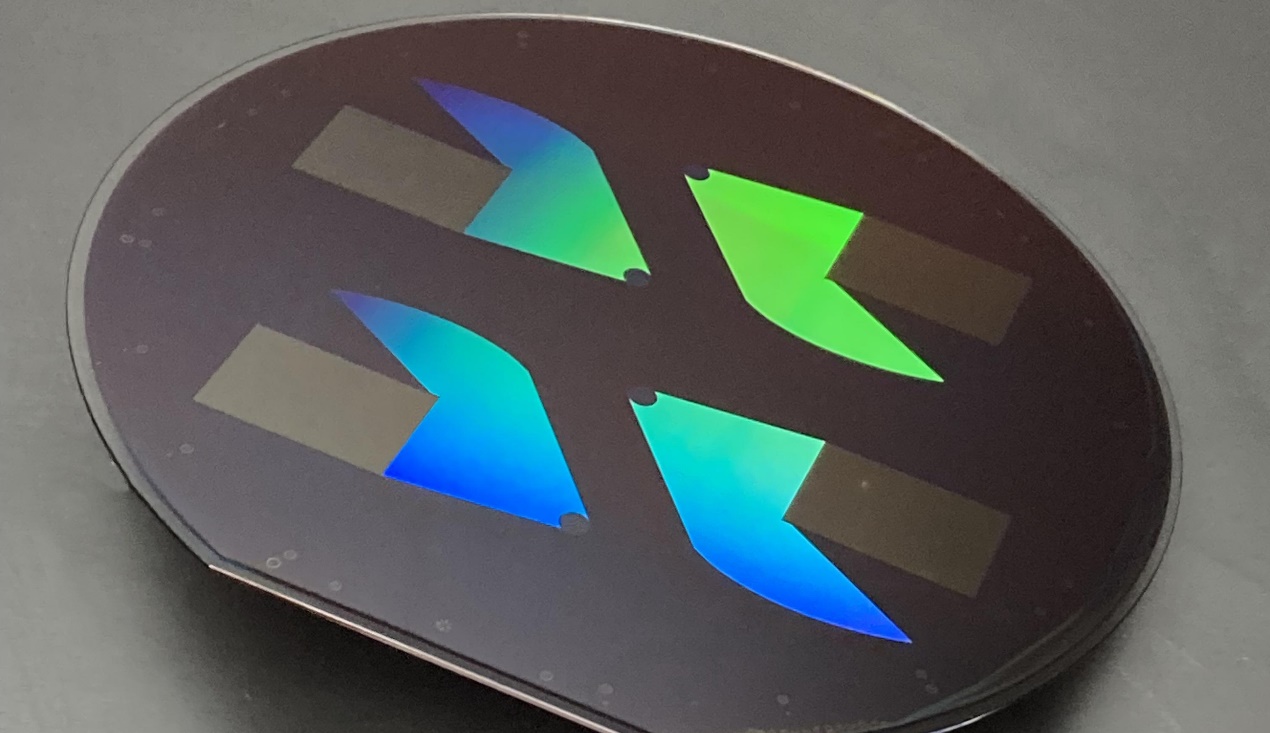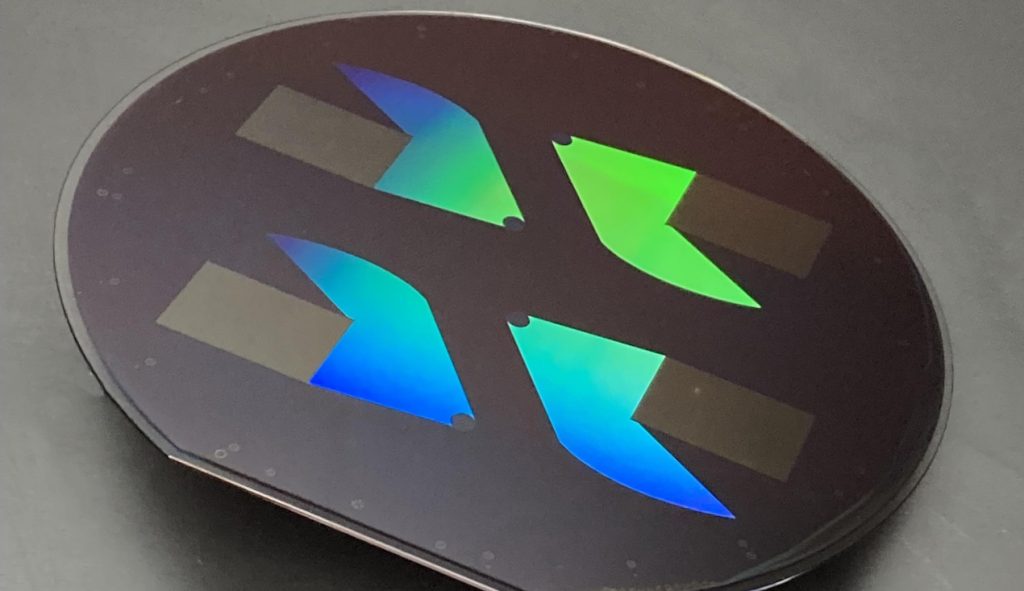For years, the tech and investment circles are always expecting the next big thing.
The metaverse became a hit when people were expecting the next-generation internet and generalized digital technologies after the mobile internet. AR devices, however, will become the foothold of the next-generation intelligent mobile devices.
Leveraging its deep accumulation in micro-nano optics design and fabrication, semiconductor precision machining, efficient automated detections, and other links, as well industry-leading optical waveguide process technologies, AAC Technologies, a world-leading provider of high-precision wafer optical solutions, together with Dispelix, an industry-leading optical waveguide manufacturer, have successfully developed the new-generation full color optical waveguide glasses. With these glasses, AAC Technologies has laid a solid technology and mass production foundation for its further exploration of the AR market.
So, why are such glasses so unique?

( A sample of the new-generation full color optical waveguide wafer developed by AAC Technologies and Dispelix )
Currently, most AR devices use multi-layer optical waveguide glasses when it’s difficult for a single-layer optical waveguide glasses to meet the display requirements of large field of view or high-quality color images. However, multi-layer optical waveguide glasses are still not the perfect solutions. Their interlayer alignment tolerances and stray light caused by reflections between layers can lead to severe rainbow strips and MTF reduction, affecting image quality.
Jointly developed and manufactured by AAC Technologies and Dispelix, the new-generation full color optical waveguide glasses feature better light efficiency, higher resolution, better color uniformity, and other advantages, balancing large field of view, and high image quality with single-layer optical waveguide glass, bringing consumers clearer images and a lighter wearing experience.
1. Full colors in a single layer: Currently, the industry normally uses two to three layers to realize full color waveguide. However, AAC Technologies has broken through the limits of optical waveguide bandwidth and achieved full colors in a single layer waveguide with its industry-leading process technology and unique high-refractive index grating processing technology.
2. Compatibility with a variety of FOV: Such lenses can meet the needs of different clients and application scenarios as their optical waveguide is compatible with an FOV of 30 to 50 degrees.
3. Upgraded light efficiency: The unique coupling-in grating design has significantly improved coupling efficiency, ensuring that more than 90% of the light can enter the optical waveguide. The gratings of expansion area and coupling-out area were designed independently in different sub-area, ensuring the overall light efficiency of the glasses exceed 310nits/lm.
4. Thinner and lighter: As we all know, the miniaturization and thinning of glasses play a vital role in the development of AR technologies. AAC Technologies has used the single-layer full color technology to improve light transmittance and further thinned and lightened the glasses. Compared with ordinary double-layer solutions on the market, the thickness and weight of the glasses are reduced by more than 50% to greatly increase the wearing comfort of users.
5. Better color uniformity: The expansion area and coupling-out area are optimized and adjusted to achieve consumer-grade color uniformity.
6. Less light leakage: The grating design has reduced the light leakage outside the optical waveguide in coupling-out area to protect privacy.
7. Higher definition: Users can easily read the information presented by the device when the definition is higher (MTF@16lp/deg > 40%).
AAC Technologies also boasts world-leading high-precision wafer processing capabilities, a vital core technology support in the manufacturing process of optical waveguide glasses.
A total reflection can only be achieved when the incident angle is greater than the critical angle. As the latter is related to the refractive index of the waveguide medium, the higher refractive index, the smaller critical angle, and the easier it is for total reflection to occur. Therefore, to obtain a large FOV , a glass substrate with a high refractive index is needed. As the world’s leading provider of high-precision wafer optical solutions, AAC Technologies possesses the core technologies and mass production capabilities for producing glass wafers of various dimensions with technological processes for cutting, grinding, polishing, cleaning, and more.
Currently, AAC Technologies is building a mass production line for manufacturing single-layer full color optical waveguide glasses. Through continuous innovation, it will continue to vigorously promote the research and development of multiple AR/VR projects, including optical waveguides and opto-mechanical projection lenses.
